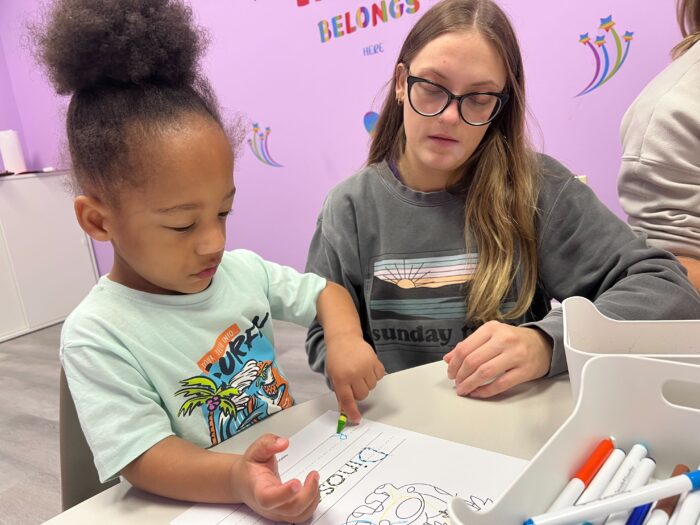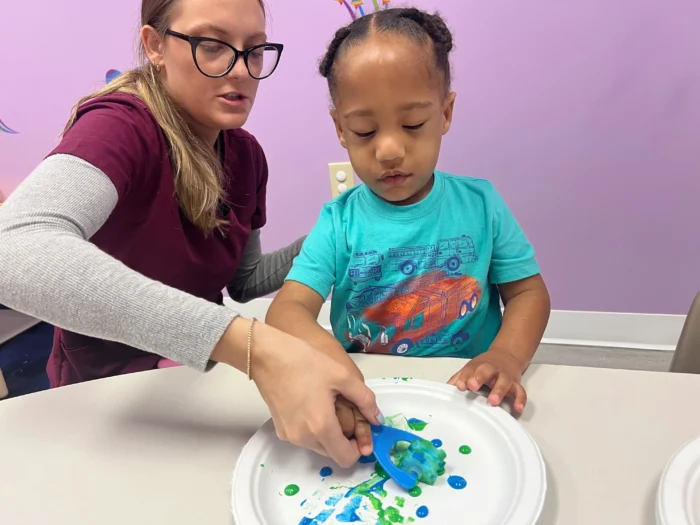
If your toddler has been diagnosed with autism or you suspect they’re on the spectrum, ABA therapy is a treatment option worth considering. ABA, which is widely regarded as a leading, evidence-based approach, proves essential for early intervention in toddlers with ASD.
With rising awareness and diagnosis rates of ASD in young children, the importance of starting early cannot be overstated. This article discusses how ABA therapy for toddlers works, what the benefits are, and how to successfully implement this therapy.
What Is ABA for Toddlers?
ABA therapy is a targeted intervention that addresses the developmental needs of children diagnosed with Autism Spectrum Disorder (ASD). By beginning ABA therapy at a young age, parents and caregivers give their children the best chance for developmental success.
The strategies used in ABA focus on improving communication, social, and behavioral skills and divide them into smaller, more manageable components. This way, toddlers are not overwhelmed but rather encouraged by their accomplishments, no matter how minor they may be.
This personalized therapy is founded on evidence-based practices and decades of research. It is intended not only to treat ASD symptoms but also to provide toddlers with the skills they need to figure out their environment better.
How Does ABA Therapy Work for Toddlers?
Each therapy session is shaped to the child’s needs. These sessions, lasting typically a few hours, adjust to the child’s age, focus, and developmental goals.
Practically, ABA therapy for autistic toddlers often takes the form of guided play. Toddlers can learn to identify emotions, communicate needs, and follow simple instructions through activities like role-playing games, puzzle assembly, storytelling, dancing, or other games.
The rhythm of therapy—how frequently and for how long each session lasts—is determined after careful evaluation by the child’s care team, which includes families and a board-certified behavior analyst (BCBA).
It is recommended that the child receives at least 2–5 hours of ABA therapy per day, but this will vary depending on the improvement plan and the toddler’s specific symptoms and autism type. Some may benefit from fewer hours while others require more, and ABA therapy hours can be more intense in early life. The recommended length of ABA therapy is highly individual.
BCBAs develop the child’s learning plan and direct the therapy, while Registered Behavior Technicians (RBTs), who are trained and certified in applied behavior analysis techniques, work closely with the child to translate those plans into engaging activities.
Some common methods when working with toddlers include:
- Discrete Trial Training (DTT)
- Natural Environment Training (NET)
- The Picture Exchange Communication System (PECS)
How do ABA methods work? In general, the toddler’s favorite toys or activities are used as positive reinforcements to motivate and maintain engagement while progress is regularly tracked and rewarded. As the child progresses, the ABA therapy activities for toddlers become more structured, catering to the toddler’s pace and readiness.
Home vs. Clinic ABA with Toddlers
ABA therapy doesn’t stop at the school or clinic door. Choosing the best setting for ABA therapy is determined by what works best for the toddler and their family.
ABA strategies for toddlers at home are a vital part of the program, as they allow families to continue the learning and growth wherever they are.
In-home ABA therapy includes daily activities — like snack time to practice communication skills or cooperative play with siblings to improve social interactions. Using picture cards at mealtime, for example, allows toddlers to request specific foods, directly addressing communication goals.
On the other hand, clinics or schools provide a structured setting with specialized activities. Toddlers may participate in group games that require takThing turns, such as simple board games or circle time activities, which promote social skills among peers.
In addition, sensory play stations, filled with materials such as play dough or water tables, help kids improve sensory integration and motor skills while adhering to the therapy framework.
How ABA Therapy Benefits Toddlers
For children with autism, ABA therapy has a major positive impact on their early development. The direct effects of autism therapy for toddlers contribute to their long-term development and well-being, with a focus on:
- Improving social skills — Toddlers learn to effectively engage in social interactions by understanding and responding to cues from others. This foundation will greatly improve their ability to make friends and interact socially.
- Boosting autonomy — ABA therapy teaches basic life skills like dressing, eating, and toileting independently, which promotes self-sufficiency and confidence, crucial for their preschool years.
- Decreasing problematic behaviors — By identifying triggers and teaching alternative behaviors, ABA reduces issues such as aggression and tantrums, resulting in a calmer, more enjoyable life for the toddler and their family.
- Increasing communication — Children learn to express their needs and emotions more effectively through ABA activities for toddlers that focus on communication. This provides them with new ways to connect with the world.
Early and targeted intervention sets children up for future success in academic, social, and personal areas. While it’s common for parents to expect quick changes in behavior, it’s important to understand that improvement often comes slowly.
Does ABA Treatment Have an Age Limit?
Questions about the ABA therapy age limit often arise, but it’s important to note that ABA can be effective for individuals at any stage of life.
Moreover, it has become clear that autism symptoms can often be detected in children as young as 18 months, and early detection is crucial for initiating interventions promptly. As a result, toddlers can begin ABA at the age of 18 months, and many children with autism start ABA therapy around the age of two.
Conclusion
To conclude, starting ABA therapy can transform the lives of autistic toddlers by gradually improving their ability to communicate, interact, and thrive independently.
Recognizing the need for patience, Abacus Therapies is here as your compassionate guide, ready to provide advice and support with ABA therapy for toddlers and help your child grow at their own pace.
FAQs
What is the best age to start ABA?
The best age to begin ABA therapy is as early as possible, typically between the age of 18 months and 2–3 years. Early intervention can take advantage of the brain’s developmental plasticity, resulting in significant improvements in behavior, communication, and social skills. That being said, even if you start ABA therapy at the age of six you are likely to see significant improvements in your child’s development.
How do you know if your child needs ABA therapy?
If your child has difficulty communicating, struggles in social situations, has sensory issues, exhibits problematic behavior, or struggles to express basic emotions, ABA therapy may be beneficial. A consultation with a specialist can determine whether ABA is appropriate for your child’s specific needs.
How long are ABA therapy sessions?
ABA therapy sessions usually last between two and five hours, but this can vary depending on the child’s age, needs, and goals. Some children may benefit from shorter or longer sessions.



